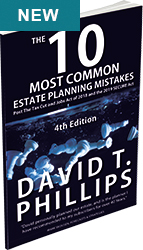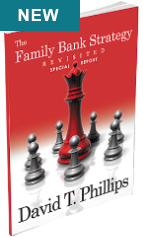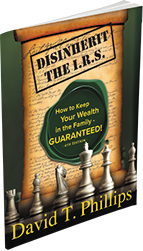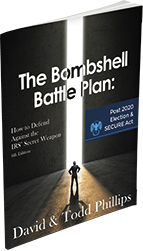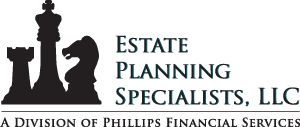
Bob Carlson - IRA with a TWIST

IRA WATCH:
Preserving Your IRA to Last for Heirs
IRAs and other qualified retirement plans are high on the list of today's greatest planning concerns. They are among the most valuable assets in many households, and people often are worried about what will happen to their IRAs and 401(k)s. They want the IRAs to last their lifetimes and beyond. The IRAs are supposed to help not only their spouses but also children and, hopefully, grandchildren.
Standing in the way are taxes.
For many people, the estate tax no longer is a problem. Each person can leave up to $5.34 million of assets tax free in 2014, and a married couple can leave $10.68 million tax free because of the portability provision. (In 19 states and the District of Columbia, though, there could be estate and inheritance taxes on the IRA.)
The problem for many people is income taxes. Distributions from a traditional IRA are taxed as ordinary income, whether the distributions are made to you, your spouse, or your children. The after-tax value of your IRA to your loved ones is less than the IRA's market value. Taxes could take 40% or more of its value, depending on the income tax rates imposed on the distributions.
Most people start to realize how much income taxes will deplete their IRAs about the time they start receiving their required mini-mum distributions (RMDs).
Last month we discussed how you could avoid this situation by converting your traditional IRA into a Roth IRA. You pay taxes on the value of the IRA today, and that ensures your beneficiaries receive tax-free distributions from it.
Many people still are repelled by the idea of paying taxes early. Some also aren't confident Congress will leave the tax-free status of Roth IRAs undisturbed.
For them, there are other strategies to consider. One of them recently was brought to me by David Phillips, CEO of Estate Planning Specialists and my insurance expert.
With this strategy you can eliminate all income taxes with exception of the funds that you and your spouse personally withdraw to live on or what you are forced to take out as an RMD. In addition, this strategy provides a tax-free, guaranteed inheritance to your children and grandchildren. It also can provide guaranteed lifetime income to your spouse and funding to your favorite charities. Plus, you and your heirs control the investment strategies for your life and beyond.
Here's how the strategy works. David calls it "The IRA with a TWIST Strategy."
First, you change the secondary or contingent beneficiary of your IRA to a charity; your spouse is generally the primary beneficiary. The best bet might be to name a Donor-Advised Fund (private foundation) as the charity, and we'll shortly discuss details of that. Next, acquire a life insurance policy (ideally a joint and survivor policy issued to both you and your spouse) and use required minimum distributions or regular distributions from the IRA to pay the premiums. It usually is best to have the life insurance benefit be equal to your IRA value and have it owned by an irrevocable trust to ensure it isn't included in your estate for tax purposes. The trust benefits your children, and perhaps the grandchildren.
Here's an example.
Max Profits is 71 and his wife Rosie is 65. Max has a $2 million traditional IRA, and he's going to have to begin RMDs, with the first one being about $73,000. He doesn't need anywhere near that much money from the IRA to fund his expenses, and he certainly doesn't want that much additional taxable income.
Max and Rosie first obtain coverage under a joint and survivor life insurance policy with a benefit of $2 million. Their good health results in a premium of $25,213. They also establish a life insurance trust to be the beneficiary and owner of the policy, with their three children and four grandchildren as future beneficiaries of the trust.
They also establish a Donor-Advised Fund and change the beneficiary designation form of Max's IRA to name the foundation as the contingent or secondary beneficiary of the IRA. Rosie is the primary beneficiary, so the charity won't receive anything until Rosie passes away.
During Max's lifetime, he takes RMDs from the IRA and donates a portion of them to the trust to be used to pay the insurance premiums. These should qualify as tax-free gifts under the annual gift tax exclusion.
After Max passes away, the IRA is available to Rosie for income, and she continues to use a portion of the income to make gifts to the trust to pay insurance policy premiums as needed.
After Rosie passes away, the remaining value of the IRA goes to the charity, i.e. your Donor-Advised Fund. There are no taxes on this transfer. The children and grandchildren then can serve as directors of the fund and make charitable gifts from the fund over the years in accordance with the by-laws that you had set up years prior.
Also after Rosie's passing, the life insurance policy pays $2 million to the insurance trust, and the trust makes income and principal distributions to the children and grandchildren according to the terms Max and Rosie set when they created the trust. Distributions could be made all at once or over time. The life insurance proceeds avoid all income and estate taxes for both the trust and the beneficiaries.
The result is that the children and grand-children receive the IRA's full initial value without any depletion by taxes, Max's RMDs, or poor investment returns. Max and Rosie both have access to the IRA during their lifetimes. The remainder of the IRA goes to the foundation set up by Max and Rosie, and their children and grandchildren oversee it. Because of the leverage in the insurance policy and the lack of taxes, there is more money available than before, so all these goals can be met.
A number of variations in the details are possible. The Profits can choose from several premium payment schedules for the insurance policy, such as paying the premiums over seven, 10 or 15 years, or paying them annually up to age 100. Instead of naming Rosie as the sole initial beneficiary of the IRA, a charitable trust could be the beneficiary. It would pay Rosie a lifetime income, and any remainder would go to the foundation or other charities. Or after Max's passing the IRA could buy an annuity payable to Rosie for life.
There are many choices for the charitable beneficiary of the IRA. You could name individual charities you like as the beneficiary. But naming a Donor-Advised Fund provides more flexibility. You don't know today how much money will be available or which charities will be family favorites. The Donor-Advised Fund allows the decisions to be deferred and allows the charitable contributions to be spread over years. It also provides an opportunity for your offspring to work together selecting charities and to develop the habit of giving.
If you go the donor-advised foundation route, I suggest you consider establishing yours through Legacy Global Foundation. It is a well-established administrator of donor-advised foundations, charges reasonable fees, and is not affiliated with or partial to any charity. You can contact them at 480-505-6248 or www.legacy-global.org. (Ignore the hyphen.)
For more details about this strategy or the type of life insurance policy that might be available to you, contact David Phillips at Estate Planning Specialists at 888-892-1102.
The earlier you start on this strategy the better so that you can obtain the lowest cost life insurance. Waiting can only increase the premiums.
